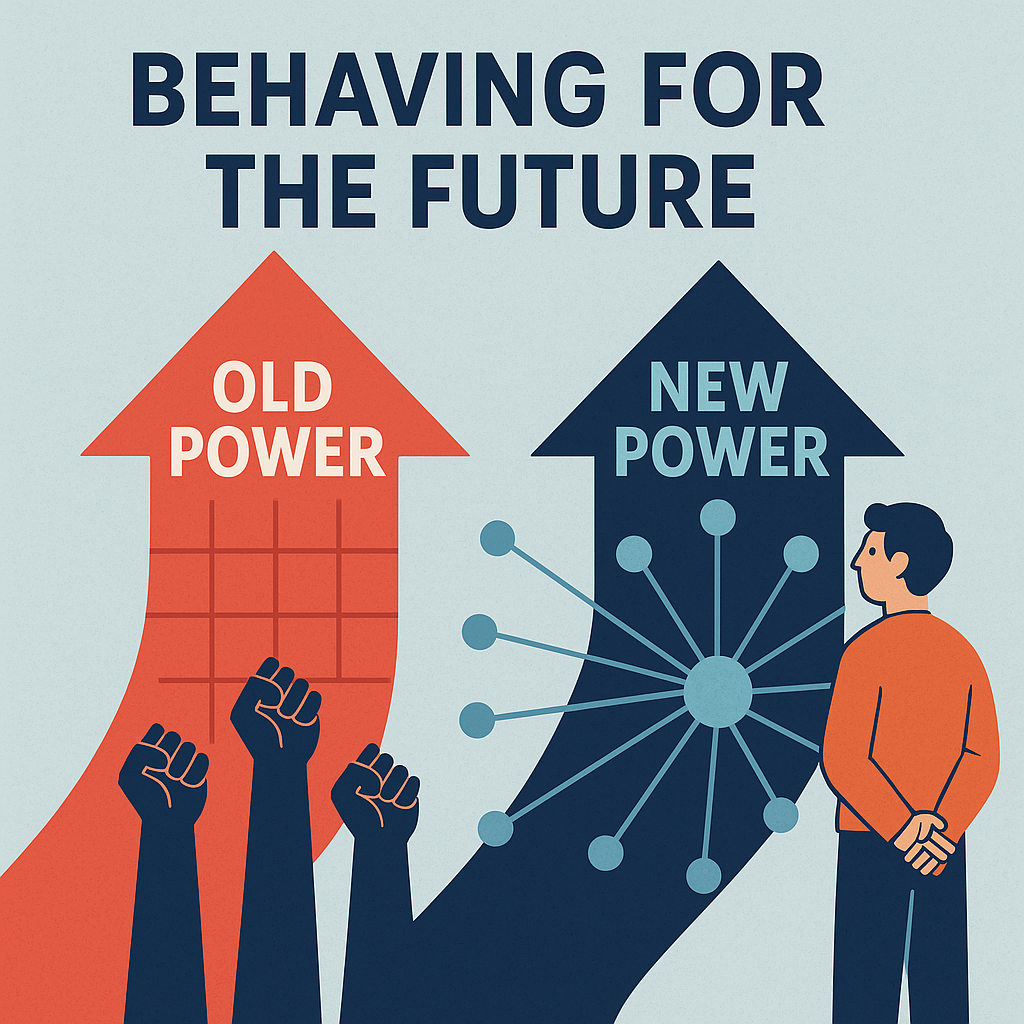
The nature of power is changing. In New Power, authors Jeremy Heimans and Henry Timms argue that old power is like a currency—held by few and spent carefully—while new power behaves more like a current, open, and participatory, gaining strength as more people contribute. For associations, this shift offers both a challenge and an opportunity. Successful organizations will adopt new power behaviors, enabling deeper engagement, shared leadership, and more agile responsiveness to change.
Old Power vs. New Power: A Behavioral Shift
According to Heimans and Timms (2018), old power values are institutional, hierarchical, and expert-driven. New power values, by contrast, are networked, participatory, and peer led. In practical terms, this shift translates into changes in how people expect to engage:
| Old Power Behaviors | New Power Behaviors |
| Command and control | Share and shape |
| Decision behind closed doors | Transparent collaboration |
| Formal expertise | Crowd wisdom and co-creation |
| Consuming content | Creating and remixing content |
Associations often struggle with the shift to these behaviors because governance models and membership structures were built on old power assumptions—members pay dues, leadership makes decisions, and staff executes. But today’s stakeholders want more than benefits; they want a voice.
Four New Power Behaviors for Associations
- Co-Creation Over Consultation
Associations must move beyond surveys and listening sessions toward true co-creation, inviting members and partners to shape programs, content, and governance. Open-source platforms and member-led task forces are good starting points.
“New power gains momentum when people feel they have a stake—and a say.” (Heimans & Timms, 2018)
- Radical Transparency
Members increasingly expect transparency in finances, decision-making, policy stances, and internal dynamics. This doesn’t mean chaos but accessible information, open dialogue, and trust-building through visibility.
“Transparency is a precondition to participation.” (Heimans & Timms, p. 174)
- Building a Peer-Led Culture
Rather than relying on top-down leadership, associations can foster a distributed leadership model—empowering chapters, SIGs, and volunteer communities to take the initiative and act autonomously. This unlocks collective energy and new ideas.
“A crowd that feels ownership will outperform one that simply follows orders.” (Heimans & Timms, p. 206)
- Acting Like a Platform, Not a Pipeline
Traditional associations operate like pipelines, delivering value from the organization to the members. New power organizations act like platforms—connecting members, enabling them to build, share, and influence the association’s direction.
“The future belongs to those who can channel participation—not just content or authority.” (Heimans & Timms, p. 62)
Association Example: The Rise of Member-Led Innovation
The American Alliance of Museums (AAM) offers a strong example. By launching an open innovation lab that allows members to propose and lead experiments in engagement, AAM has embraced co-creation and participatory governance—a far cry from the traditional committee-led model.
Call to Action
To thrive in the age of new power, association leaders must stop asking, how do we get members to support our vision?And instead, ask, how do we support theirs? The organizations that embrace this shift will unlock energy, relevance, and long-term value far beyond what old power could offer.
CODA
As Heimans and Timms write, “The future will be a battle and a negotiation between old and new power.” Associations don’t have to choose one or the other. The most will build hybrids—combining the best to create legitimacy, trust, and vibrant community engagement.
Citation
Heimans, J., & Timms, H. (2018). New Power: How Power Works in Our Hyperconnected World—and How to Make It Work for You. Doubleday.